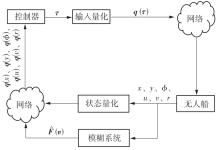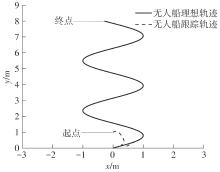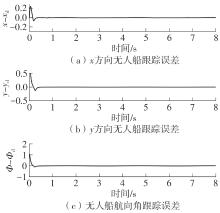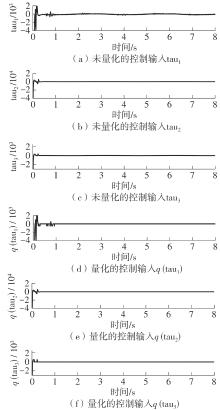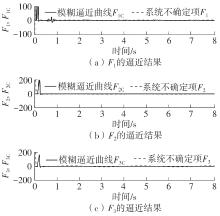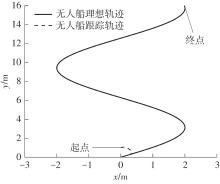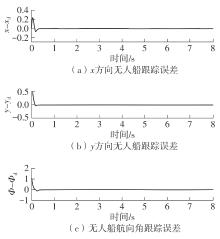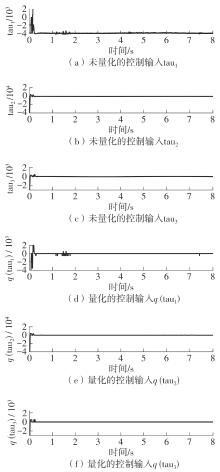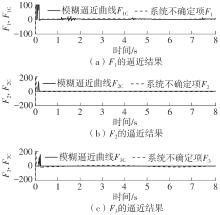| 1 |
刘训文,徐超,陈再发 .事件触发的自适应PID海洋水面船舶航迹跟踪控制[J].上海海事大学学报,2023,44(2):11-17.
|
|
LIU Xunwen, XU Chao, CHEN Zaifa .Event-triggered adaptive PID trajectory tracking control for marine surface vehicles[J].Journal of Shanghai Maritime University,2023,44(2):11-17.
|
| 2 |
PARK B S, KWON J W, KIM H .Neural network-based output feedback control for reference tracking of underactuated surface vessels[J].Automatica,2017,77:353-359.
|
| 3 |
ZHANG G, LI J, YU W,et al .Event-triggered robust neural control for unmanned sail-assisted vehicles subject to actuator failures[J].Ocean Engineering,2020,216:107754/1-11.
|
| 4 |
ZHANG G, CHU S, JIN X,et al .Composite neural learning fault-tolerant control for underactuated vehicles with event-triggered input[J].IEEE Transactions on Cybernetics,2020,51(5):2327-2338.
|
| 5 |
CHWA D .Global tracking control of underactuated ships with input and velocity constraints using dynamic surface control method[J].IEEE Transactions on Control Systems Technology,2010,19(6):1357-1370.
|
| 6 |
PETTERSEN K Y, NIJMEIJER H .Underactuated ship tracking control:theory and experiments[J].International Journal of Control,2001,74(14):1435-1446.
|
| 7 |
LIU S, JIANG B, MAO Z,et al .Adaptive fault-tolerant formation control of heterogeneous multi-agent systems under directed communication topology[J].Sensors,2022,22(16):6212/1-20.
|
| 8 |
董早鹏,刘涛,万磊,等 .基于Takagi-Sugeno模糊神经网络的欠驱动无人艇直线航迹跟踪控制[J].仪器仪表学报,2015,36(4):863-870.
|
|
DONG Zaopeng, LIU Tao, WAN Lei,et al .Straight-path tracking control of underactuated USV based on Takagi-Sugeno fuzzy neural network[J].Chinese Journal of Scientific Instrument,2015,36(4):863-870.
|
| 9 |
NING J, LI T, CHEN C L P .Neuro-adaptive distributed formation tracking control of under-actuated unmanned surface vehicles with input quantization[J].Ocean Engineering,2022,265:112492/1-12.
|
| 10 |
PARK B S, YOO S J .Quantized-communication-based neural network control for formation tracking of networked multiple unmanned surface vehicles without velocity information[J].Engineering Applications of Artificial Intelligence,2022,114:105160/1-11.
|
| 11 |
YU X N, HAO L Y .Integral sliding mode fault tolerant control for unmanned surface vessels with quantization:less iterations[J].Ocean Engineering,2022,260:111820/1-10.
|
| 12 |
ZHOU J, WEN C, WANG W,et al .Adaptive backstepping control of nonlinear uncertain systems with quantized states[J].IEEE Transactions on Automatic Control,2019,64(11):4756-4763.
|
| 13 |
CHOI Y H, YOO S J .Quantized feedback adaptive command filtered backstepping control for a class of uncertain nonlinear strict-feedback systems[J].Nonlinear Dynamics,2020,99(4):2907-2918.
|
| 14 |
CHOI Y H, YOO S J .Neural-networks-based adaptive quantized feedback tracking of uncertain nonlinear strict-feedback systems with unknown time delays[J].Journal of the Franklin Institute,2020,357(15):10691-10715.
|
| 15 |
CHOI Y H, YOO S J .Distributed quantized feedback design strategy for adaptive consensus tracking of uncertain strict-feedback nonlinear multiagent systems with state quantizers[J].IEEE Transactions on Cybernetics,2021,52(7):7069-7083.
|
| 16 |
HAO L Y, ZHANG H, LI H,et al .Sliding mode fault-tolerant control for unmanned marine vehicles with signal quantization and time-delay[J].Ocean Engineering,2020,215:107882/1-11.
|
| 17 |
HAO L Y, ZHANG H, LI T S,et al .Fault tolerant control for dynamic positioning of unmanned marine vehicles based on T-S fuzzy model with unknown membership functions[J].IEEE Transactions on Vehicular Technology,2021,70(1):146-157.
|
| 18 |
HAO L Y, YU Y, LI T S,et al .Quantized output-feedback control for unmanned marine vehicles with thruster faults via sliding-mode technique[J].IEEE Transactions on Cybernetics,2021,52(9):9363-9376.
|
| 19 |
WU J, SUN W, SU S F,et al .Adaptive asymptotic tracking control for input-quantized nonlinear systems with multiple unknown control directions[J].IEEE Transactions on Cybernetics,2022,53(8):5216-5225.
|
| 20 |
YOO S J, PARK B S .Quantized-states-based adaptive control against unknown slippage effects of uncertain mobile robots with input and state quantization[J].Nonlinear Analysis:Hybrid Systems,2021,42:101077/1-17.
|
| 21 |
沈智鹏,曹晓明 .输入受限四旋翼飞行器的模糊自适应动态面轨迹跟踪控制[J].控制与决策,2019,34(7):1401-1408.
|
|
SHEN Zhi-peng, CAO Xiao-ming .Fuzzy adaptive dynamic surface trajectory tracking control for quadrotor UAV with input constraints[J].Control and Decision,2019,34(7):1401-1408.
|
| 22 |
SWAROOP D, HEDRICK J K, YIP P P,et al .Dynamic surface control for a class of nonlinear systems[J].IEEE Transactions on Automatic Control,2000,45(10):1893-1899.
|
| 23 |
CHOI B J, KWAK S W, KIM B K .Design of a single-input fuzzy logic controller and its properties[J].Fuzzy Sets and Systems,1999,106(3):299-308.
|
| 24 |
WANG J, RAD A B, CHAN P T .Indirect adaptive fuzzy sliding mode control:part I:fuzzy switching[J].Fuzzy Sets and Systems,2001,122(1):21-30.
|
| 25 |
NING J, MA Y, LIU L,et al .Fuzzy course tracking control of an unmanned surface vehicle with event-triggered mechanism and input quantization[J].Ocean Engineering,2023,288:115704/1-8.
|
 ), 马一帆1, 李伟1(
), 马一帆1, 李伟1( ), 李铁山2, 陈俊龙3, 岳兴旺1
), 李铁山2, 陈俊龙3, 岳兴旺1
 ), MA Yifan1, LI Wei1(
), MA Yifan1, LI Wei1( ), LI Tieshan2, CHEN Junlong3, YUE Xingwang1
), LI Tieshan2, CHEN Junlong3, YUE Xingwang1
